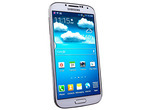Phone Comparisons - OnePlus 9 vs OnePlus 9 Pro - Android
OnePlus has launched two new flagship smartphones, and it’s time to compare them. In this article, we’ll compare the OnePlus 9 vs OnePlus 9 Pro. These two handsets have been leaking like crazy prior to their launch, and the vast majority of those leaks were spot on. The 9 Pro does have some advantages over [...]
Read More...
The post Phone Comparisons: OnePlus 9 vs OnePlus 9 Pro appeared first on Android Headlines.

OnePlus has launched two new flagship smartphones, and it’s time to compare them. In this article, we’ll compare the OnePlus 9 vs OnePlus 9 Pro. These two handsets have been leaking like crazy prior to their launch, and the vast majority of those leaks were spot on. The 9 Pro does have some advantages over the base model, as expected. That’s what justifies its ‘Pro’ tag, and a higher price tag.
Both of these phones are flagship-grade devices, though, and both are quite compelling. What we’ll help you answer in this article, is whether the ‘Pro’ model is worth paying a premium over the base unit. We’ll let you come to a conclusion on your own, of course, but will share quite a few facts with you to make that choice easier. We’ll kick things off by listing their specifications, and will then move to a number of other categories, including design, display, performance, and so on. Let’s kick off the OnePlus 9 vs OnePlus 9 Pro comparison, shall we.
Specs
| OnePlus 9 | OnePlus 9 Pro | |
| Screen size | 6.55-inch fullHD+ AMOLED display (120Hz refresh rate) | 6.7-inch QHD+ AMOLED LTPO curved display (120Hz adaptive refresh rate) |
| Screen resolution | 2400 x 1080 | 3216 x 1440 |
| SoC | Qualcomm Snapdragon 888 | Qualcomm Snapdragon 888 |
| RAM | 8GB/12GB (LPDDR5) | 8GB/12GB (LPDDR5) |
| Storage | 128GB/256GB (UFS 3.1), non-expandable | 128GB/256GB (UFS 3.1); Non-Expandable |
| Rear cameras | 48MP (Sony IMX689, f/1.8 aperture, 1.12um pixel size 48MP images, 2.24um pixel size 12MP images (4-in-1 binning), 7P lens, EIS) 50MP (ultra-wide, Sony IMX766, 7P lens, f/2.2 aperture, Freeform Lens) 2MP (monochrome) | 48MP (Sony IMX789, f/1.8 aperture, 7P lens, OIS, EIS, 1.12um pixel size 48MP images, 2.24um pixel size 12MP images (4-in-1 binning), 23mm focal length) 50MP (ultra-wide, f/2.2 aperture, Freeform Lens, 7P lens, Sony IMX766) 8MP (telephoto, 1.0um pixel size, f/2.4 aperture) 2MP (monochrome) |
| Front cameras | 16MP (Sony IMX471, 1.0um pixel size, EIS, Fixed Focus, f/2.4 aperture) | 16MP (Sony IMX471, 1.0um pixel size, EIS, Fixed Focus, f/2.4 aperture) |
| Battery | 4,500mAh, non-removable, 65W wired charging, 15W wireless charging, reverse wireless charging | 4,500mAh, non-removable, 65W wired charging, 50W wireless charging, reverse wireless charging |
| Dimensions | 160 x 74.2 x 8.7mm (North America & Europe) 160 x 73.9 x 8.1mm (India & China) | 163.2 x 73.6 x 8.7mm |
| Weight | 192 grams (North America & Europe) 183 grams (India & China) | 197 grams |
| Connectivity | 5G, LTE, NFC, Bluetooth 5.2, Wi-Fi, USB Type-C | 5G, LTE, NFC, Bluetooth 5.2, Wi-Fi, USB Type-C |
| Security | In-display fingerprint scanner (optical) | In-display fingerprint scanner (optical) |
| OS | Android 11 OxygenOS | Android 11 OxygenOS |
| Price | $729 / $829 | $969 / $1,069 |
| Buy | OnePlus | OnePlus |
OnePlus 9 vs OnePlus 9 Pro: Design
Both of these phones are made out of metal and glass, and they actually resemble one another quite a bit. There are two main differentiating points between them, when it comes to design. Those points are the display, and the rear camera setup. You can instantly see that the OnePlus 9 features a flat display, while the OnePlus 9 Pro comes with a curved display. In regards to the camera setup, the OnePlus 9 Pro does include one extra camera on the back, and thus its rear camera setup looks different.
They are quite similar in terms of size

The two devices are similar in terms of size, though the OnePlus 9 Pro is both taller and wider than the OnePlus 9. That’s not something you’ll especially notice when using them, though, as the difference is not all that big. Both phones are quite large, so keep that in mind before you get them. Luckily, both devices weigh less than 200 grams, the OnePlus 9 weighs 192 grams in North America & Europe, while it weighs 183 grams in India and China. The OnePlus 9 Pro weighs 197 grams everywhere. The OnePlus 9 is considerably lighter, at least it feels that way in the hand. Both devices feel really good in the hand, though I personally prefer the feel of the regular model more, as it’s a bit smaller and easier to use.
Both phones are quite slippery
A display camera hole sits in the top-left corner of both smartphones. The power / lock buttons can be found on the right side of both phones, along with an alert slider. The volume up and down buttons are placed on the left-hand side. A Type-C USB port is included at the bottom, along with the main speaker. The secondary speaker sits above the display, while a headphone jack is not included on either phone. Both OnePlus and Hasselblad logos are visible on the back. The bottom line is, both phones feel really good in the hand, though they are slippery due to their build, so that’s another thing to keep in mind. They’re not too heavy, though, and if you’ve used larger phones before, you’ll be right at home here. The build is great on both.
OnePlus 9 vs OnePlus 9 Pro: Display
When it comes to displays, they’re not the same. Both displays are excellent, and the vast majority of people won’t really care about the difference, but the ‘Pro’ model does bring more in that regard. The OnePlus 9 includes a 6.5-inch fullHD+ 120Hz Fluid AMOLED display. That panel is flat, and it can reproduce HDR10+ content. The display is protected by Gorilla Glass (exact version unknown). This display does support a 120Hz refresh rate, but not an adaptive refresh rate. It is the same panel you’ll find on the OnePlus 8T, actually, an LTPS tech is used.
The 'Pro' variant has one of the best displays in the market

The OnePlus 9 Pro, on the flip side, features a 6.78-inch QHD+ Fluid AMOLED display with a 120Hz refresh rate. This is an LTPO panel, and it does support an adaptive refresh rate. That essentially means that the display will handle battery consumption better than the OnePlus 9. On the flip side, the base model has a lower resolution, so… the difference shouldn’t be that big. Do note that the OnePlus 9 Pro can use that adaptive refresh rate even if you choose fullHD+ resolution for it, so… you can save even more battery. You can, of course, lower the refresh rate manually as well, if you want. The ‘Pro’ model’s display can also reproduce HDR10+ content, and it’s protected by Corning’s Gorilla Glass (we still don’t know the exact version). The display also offers the ‘Hyper Touch’ feature for added sensitivity for gaming.
Both displays are excellent, and most users won't notice the difference
In real-life usage, both displays shine. The OnePlus 9 Pro’s is a bit sharper and brighter (1,300 nits max vs 1,100 on the base model), but the end result is similar. Both phones can show you really sharp content, and vivid colors. Viewing angles are excellent on both devices, by the way, as you’d expect out of quality OLED displays. They’re both extremely responsive, and are a joy to use.
OnePlus 9 vs OnePlus 9 Pro: Performance
You’d expect excellent performance out of flagship phones with the Snapdragon 888 SoC, and OnePlus’ software, right? Well, you’d be right, as both phones are quite excellent in that regard. I’d go as far as to say they’re amongst the fastest smartphones in the market, if not the fastest ones. OnePlus didn’t really skimp out on the hardware. In addition to the Snapdragon 888, the company also used LPDDR5 RAM and UFS 3.1 flash storage, at least on the ‘Pro’ model. We still don’t know if the same RAM and flash storage units come on the regular model, but chances are they are. The thing is, you won’t notice the difference regardless, at least when it comes to performance.
The performance is stellar in both cases
Both phones can offer excellent performance when it comes to regular day-to-day tasks. They can multitask really fast, and the same goes for opening / closing apps. Consuming multimedia is also not a problem, at all, and such content looks great on these displays. Both also do great when it comes to gaming, as expected. They open games quite fast, even those graphically-demanding ones. The performance is stellar, and those high refresh displays will only boost your gaming experience here. When performance is concerned, you can hardly do better than OnePlus, and these two phones are the best the company has to offer at the moment.
OnePlus 9 vs OnePlus 9 Pro: Battery
The battery life is… well, good, but nothing to write home about. I've been using the two devices for almost a week at this point, and the battery life on the 'Pro' model has been slightly worse than on the regular one. Each of these smartphones can cross the 6-hour screen-on-time barrier, though only barely. Presuming you’re not purposely trying to kill their battery with gaming, or in some other way. Your mileage may vary, of course, different people use their phones in different ways. So, if you don't usually cross that barrier, you're good to go.
The battery life is good, but not great
I expected the OnePlus 9 Pro's LTPO display to make a major difference, but that didn't happen, even though it surely helps. I'm not ready to share any final thoughts just yet, but the OnePlus 9 can keep going for longer, based on what I've seen thus far. I've been using max resolution each of the phones provide, with a 120Hz refresh rate (smart refresh rate, in the case of the OnePlus 9 Pro). The OnePlus 9 offers similar numbers to the OnePlus 8T, actually, at least based on what I've seen.
These two phones offer insanely fast 65W charging
Even if you run out of battery ahead of time, you can rely on extremely fast charging to get you back on track. Both phones support 65W fast wired charging, in addition to wireless charging. The OnePlus 9 Pro offers 50W wireless charging, with a proprietary charger, while the OnePlus 9 supports 15W wireless charging. Do note that both smartphones do ship with a 65W charging brick and cable in the box.
OnePlus 9 vs OnePlus 9 Pro: Cameras
In regards to cameras, well, both are quite compelling. I wouldn’t say each of these phones has the best cameras in the market, but they sure do offer a lot in the camera department. The OnePlus 9 Pro does offer a better camera setup, but the OnePlus 9 doesn’t really lag behind all that much. Images from their main sensors are really good. They’re sharp, and quite vibrant. The colors are excellent, and they don’t seem to be artificially boosting colors. You won’t notice a lot of post-processing here.
Both phones do a good job in low light, but the "Pro" model is better
They do a decent job in low light (though the "Pro" model is a bit better), though both phones seem to be tuned a bit more in order to handle street lights better, and to balance images a bit better, they tend to appear brighter than they should. Oh, and you'll want to use the company's Nightscape mode for low light photography. OnePlus will likely release quite a few software updates in the coming months, and many of them will be camera-focused.

Ultra-wide photos are excellent
When it comes to ultra-wide cameras, they both do an excellent job. Each of the two phones come with the same ultra-wide camera, and you can capture really good shots in all lighting conditions, pretty much. The OnePlus 9 Pro also includes a telephoto camera which allows for optical zoom, but a periscope camera is not included. All in all, this Hasselblad partnership did reflect on the color science as OnePlus promised, as colors are spot on. The OnePlus 8 Pro did bring OnePlus to a new level when it comes to camera performance, and these two phones only continue that trend. Both phones offer quite compelling camera setups.
Audio
Both the OnePlus 9 and 9 Pro come with stereo speakers. Their main speaker sits at the bottom, while the secondary is located above the display. In collaboration, they offer excellent audio output on both smartphones. The results are basically the same, even though we’re not sure if the hardware is the same, but it probably is. Dolby Atmos is supported, and you’ll get loud output, with sharp audio. Considering these are smartphones, the audio is excellent.
The same can be said for audio when you hook up a pair of headphones, presuming those headphones are good. You’ll get well-balanced audio in return, across the spectrum. You’ll even feel some bass in there. As long as you don’t expect miracles, you’ll be extremely happy with the audio performance on both smartphones.
The post Phone Comparisons: OnePlus 9 vs OnePlus 9 Pro appeared first on Android Headlines.
24/03/2021 12:00 AM
Top 10 Best Webcams For Working (Schooling) From Home – Updated March 2021
24/03/2021 08:30 PM
The FCC wants to hear from you on just how bad your internet really is
24/03/2021 11:48 PM
Dyson’s V15 Detect vacuum hunts dust with a laser 'blade'
24/03/2021 10:00 PM
Add more smart home control with TP-Link's Kasa Smart Plug down to $10
24/03/2021 01:33 PM
Looking for stuff to binge while you're at home Check out Netflix!
24/03/2021 09:23 PM
Google has L.E.A.R.N tools for students, parents, teachers
24/03/2021 05:30 PM
Samsung Galaxy S20 FE update adds Galaxy S21 camera features
24/03/2021 06:05 PM
- Comics
- HEALTH
- Libraries & Demo
- Sports Games
- Racing
- Cards & Casino
- Media & Video
- Photography
- Transportation
- Arcade & Action
- Brain & Puzzle
- Social
- Communication
- Casual
- Personalization
- Tools
- Medical
- Weather
- Shopping
- Health & Fitness
- Productivity
- Books & Reference
- Finance
- Entertainment
- Business
- Sports
- Music & Audio
- News & Magazines
- Education
- Lifestyle
- Travel & Local







